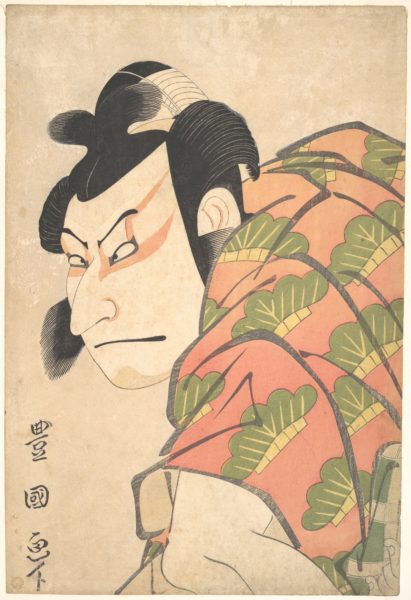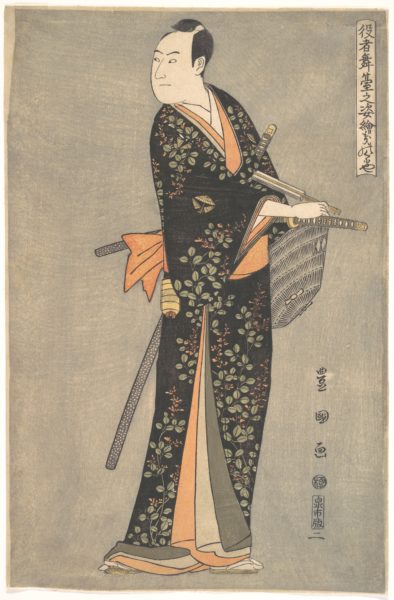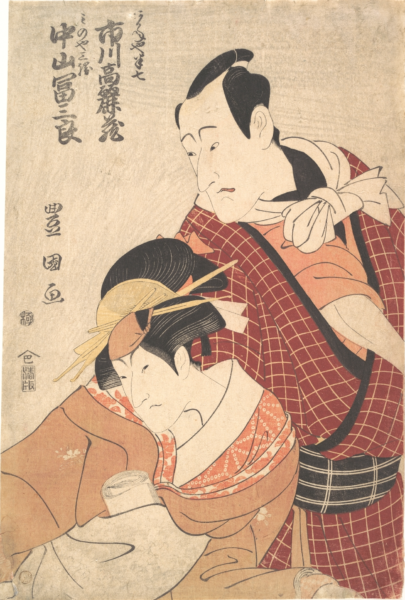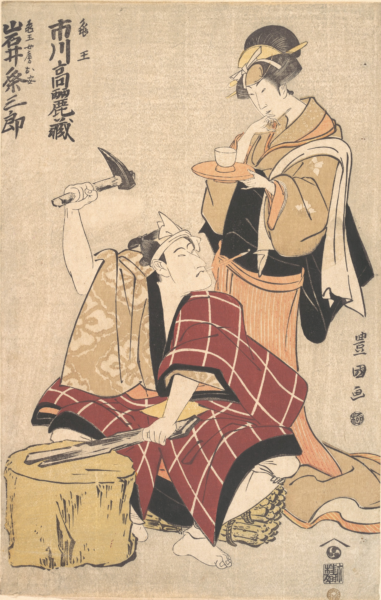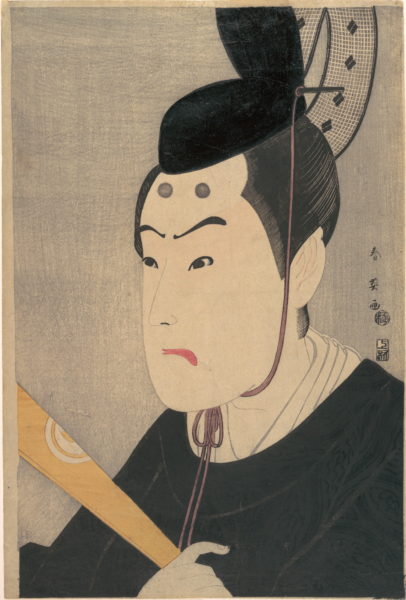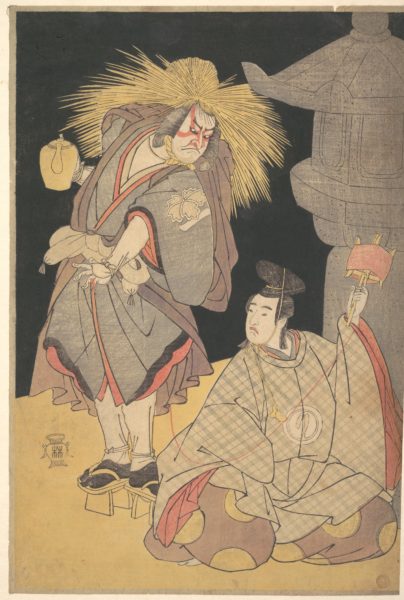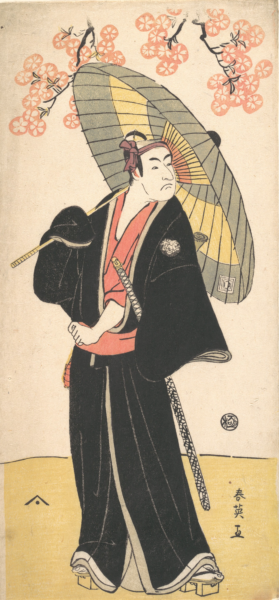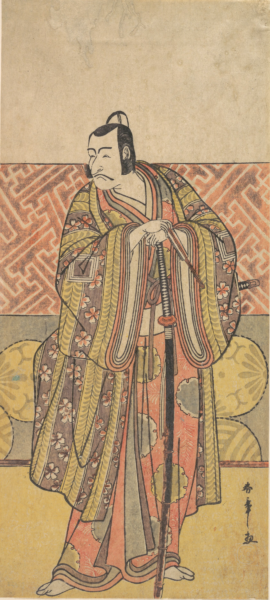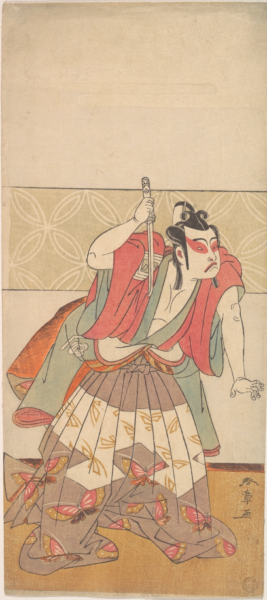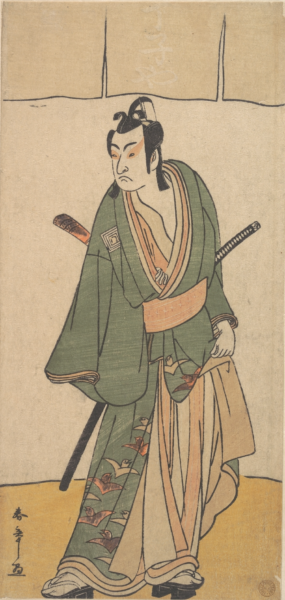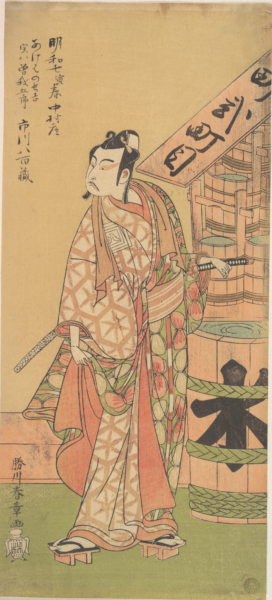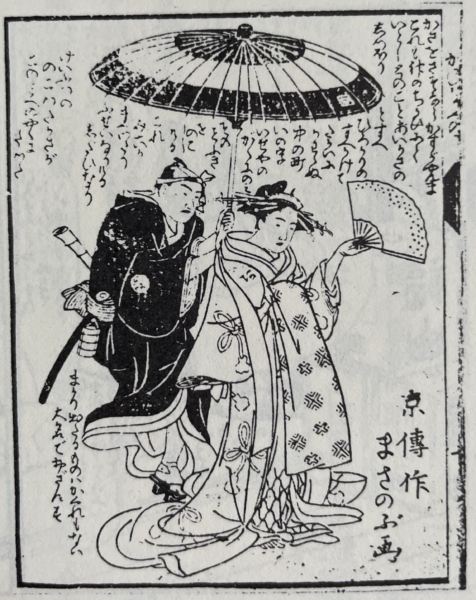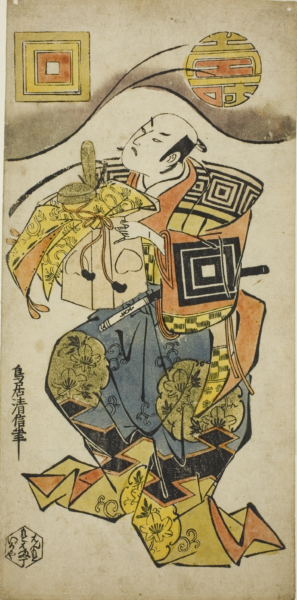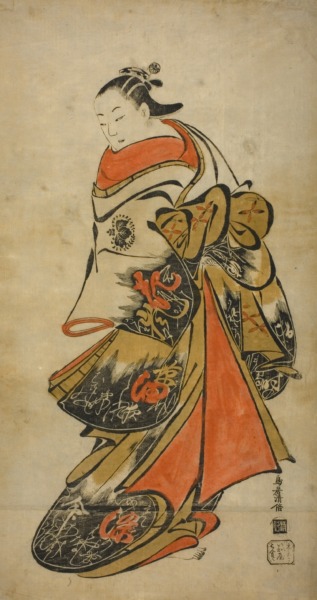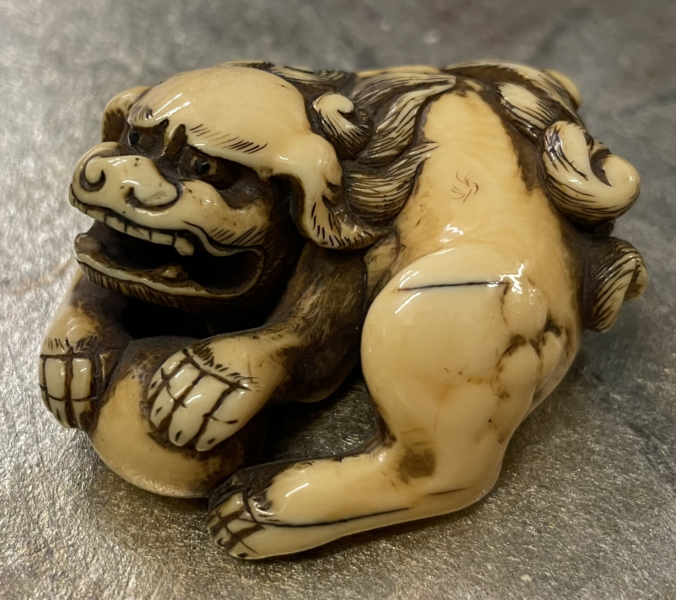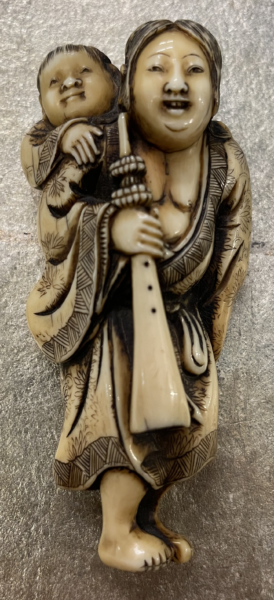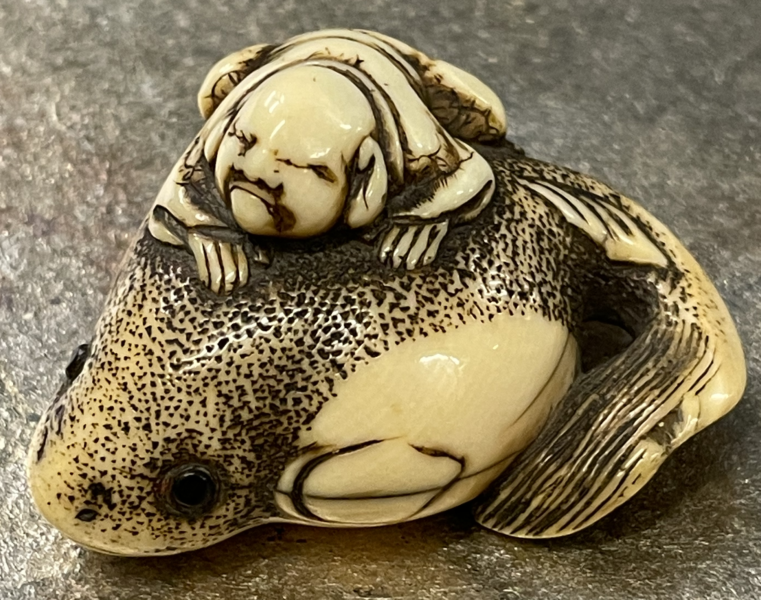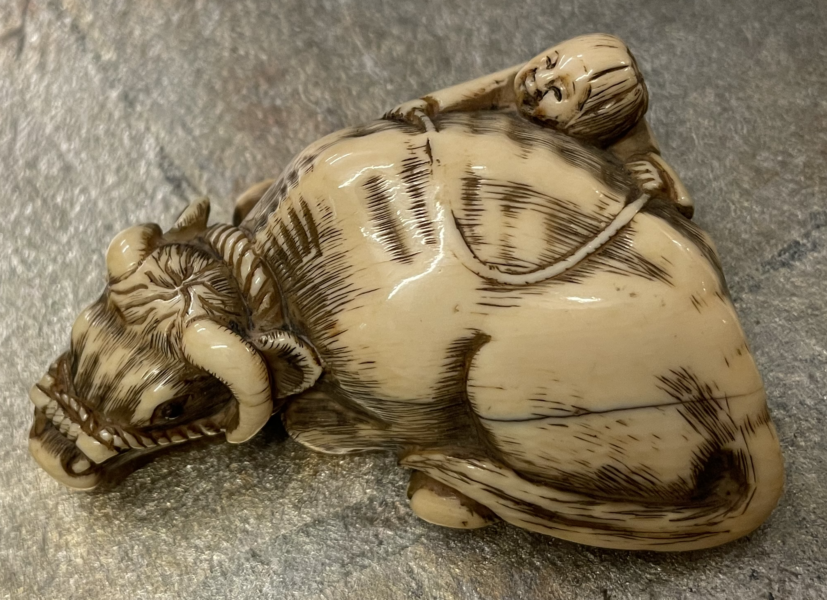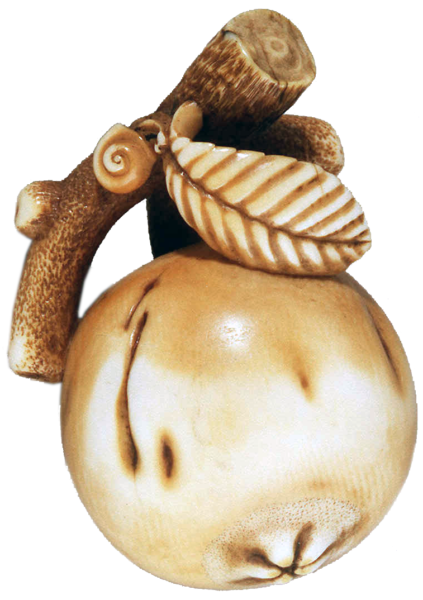Again, it is somewhat of a problem to find what the most appropriate next period would be to help getting a better insight in the development of the genre of prints of actors. In the end, I deciced to go for two periods, the first one from the year of Toyokuni’s death until 1842, when prints of actors were largely banned as part of the Tenpō Reforms, and the second covering the years when prints of actors were again in some way permitted until just before Meiji. The banning under the Tenpō Reforms, Tenpō no kaikaku 天保の改革, designed by Mizuno Tadakuni 水野忠邦 1794-1851 should start from V/1841, but was only effective from 1843, as the answer of the Tokugawa bakufu to counter a major economic crisis following a long period of economic flowering. This so-called Tenpō crisis or Tenpō no kikin 天保の飢饉 is a period when large parts of Japan suffered from a great famine, with thousands dying of starvation in the years 1836 and 1837 and with prices of especially rice and other food rising enormously. Although prints after kabuki performances continued to be made, they never feature the names of the actors and sometimes not even the roles they played. However, for the true regular visitors of the kabuki theatres, they must have been quite easily to identify.
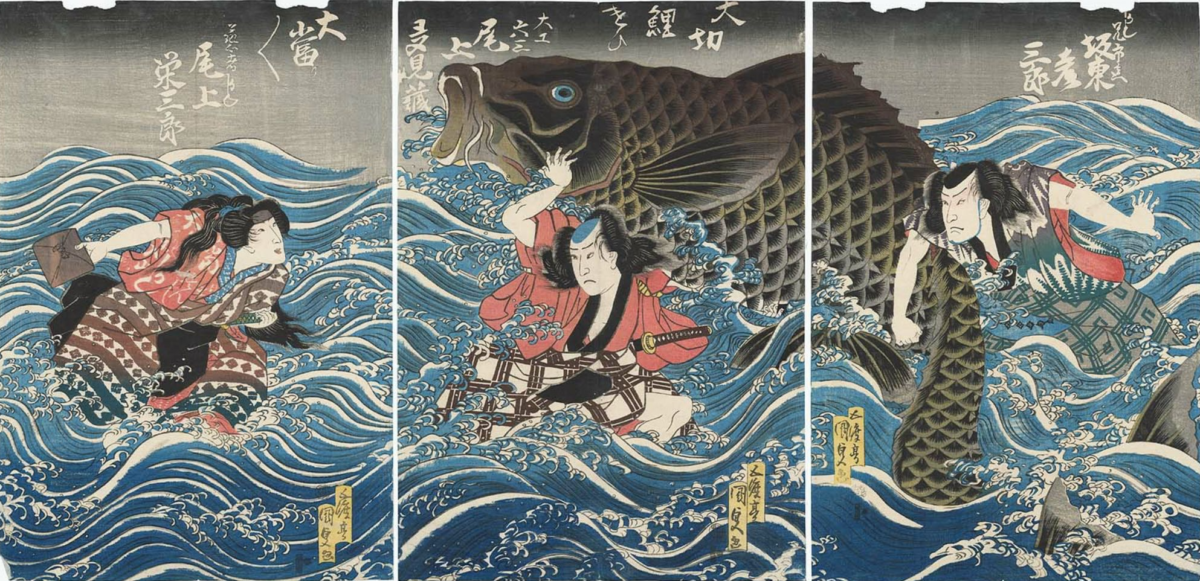
The main artists working in the first period are, of course, Utagawa Kunisada 歌川國貞 1786-1865 and Utagawa Kuniyoshi 歌川國芳1798-1861 who were among the early Toyokuni pupils, making their debut in prints of actors in 1811 and 1815 respectively, as well as Toyokuni II (二代豊國 act 1823-34), and the Kunisada pupils Sadahide (貞秀 from 1827), Sadakage (貞景 from 1828), and Sadafusa (貞房 also from 1828), all belonging to the monopolizing Utagawa tradition. They went on from where Toyokuni had brought the genre of actor prints and continued designing mostly diptych 大判二枚続 and triptych 大判三枚続 compositions. But what does the print production subdivided by months look like in the post-Toyokuni era?
| Months | What | I | II | III | IV | V | VI | VII | VIII | IX | X | XI | Prints |
| 1697 1760 | tane urushie | 42% | 9% | 5% | 29% | 563 99.5% | |||||||
| 1742 1769 | benizurie | 27% | 9% | 9% | 5% | 6% | 35% | 854 100% | |||||
| 1764 1796 | Katsukawa Bunchō Sharaku | 17% | 6% | 6% | 7% | 9% | 6% | 40% | 794 99.5% | ||||
| 1794 1825 | Utagawa Toyokuni | 14% | 18% | 5% | 10% | 13% | 6% | 12% | 13% | 1284 98.5% | |||
| 1826 1842 | Utagawa artists | 11% | 25.5% | 5% | 10.5% | 11% | 13.5 | 11% | 7% | 614 98.5% |
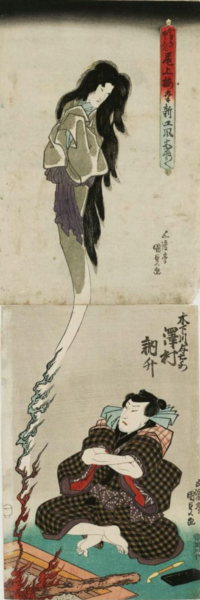
The most dramatic differences from the earlier period are to be seen in the third month, already taking the first position in the previous period with 18%, but now even increasing to a quarter of all actor prints. As for the programming in the third month, we mostly see plays on flowering cherries, such as Senbonzakura 千本櫻 in various variations, as well as performances of the play Sanmon gosan no kiri 樓門五三桐 by Namiki Gohei 初代並木五瓶 of 1778. The eighth month with 6% now more than doubles to 13.5%. And the eleventh month – was 13% — makes a dramatic fall to a mere 7%. The other months are quite stable with more or less similar percentages. Consequently, the first place is for the third month, the second place for the eighth month, the third place for the first, seventh and ninth months, closely followed by the fifth month, and the fifth and sixth positions are for the eleventh and fourth months. And the first and eleventh months together, being still good for 27% in the period from 1794 to 1825, now only make it to 18%. Again, there are only three months reaching a percentage below the 5% limit.
Mizuno Tadakuni, the architect of the Tenpō Reforms is ousted from power already by the ninth month of 1843, but it would take until about 1846/47 that artists again start designing prints after kabuki performances, just indicating the roles but not the names of the actors. Kunisada and Kuniyoshi are still the major artists working in this theme, Kunisada until his death in 1865, Kuniyoshi gradually giving up walking all the way from his home at Genyadana Sumiyoshichō to the theatres from about 1852 and certainly after suffering a stroke in the autumn of 1855 from which he only recovers slowly. Otherwise, Kuniyoshi’s pupils Yoshitora (芳虎 from 1847), Yoshifuji (芳藤 from 1850), Yoshitsuya (芳艶 from 1859), Yoshitoshi (芳年 from 1860), and Yoshiiku (芳幾 from 1861) are active in the genre, as well as Kunimaro (國麿 from 1848), Kuniteru (國輝 from 1851), Kunisada II (二代國貞 from 1853), Kuniaki (國明 from 1861), Kunihisa II (二代國久 from 1861), and above all, the most innovative talent Utagawa Kunichika (國周 from 1862 but active well into the 1890s).
| Months | What | I | II | III | IV | V | VI | VII | VIII | IX | X | XI | Prints |
| 1697 1760 | tane urushie | 42% | — | 9% | — | — | — | 5% | — | — | — | 29% | 563 99.5% |
| 1742 1769 | Benizurie | 27% | 9% | 9% | — | 5% | — | 6% | — | — | — | 35% | 854 100% |
| 1764 1796 | Katsukawa Bunchō Sharaku | 17% | 6% | 6% | — | 7% | — | 9% | 6% | — | — | 40% | 794 99.5% |
| 1794 1825 | Utagawa Toyokuni | 14% | — | 18% | 5% | 10% | — | 13% | 6% | 12% | — | 13% | 1284 98.5% |
| 1826 1842 | Utagawa | 11% | — | 25.5% | 5% | 10.5% | — | 11% | 13.5 | 11% | — | 7% | 614 98.5% |
| 1843 1865 | Utagawa | 11% | 9% | 21% | 6% | 10% | — | 12% | 10% | 11.5% | — | — | 1363 99.5% |
What a surprise, the eleventh month is now completely out, not even making it to the 5% that is, and the second month is back in! Otherwise, we are looking at a largely similar image as in the years 1826-42, and, if we just close our eyes to some minor changes (as well as the surprising drama with the kaomise performances of the eleventh month), the basis for this pattern was already laid by Toyokuni from the 1790s as just one aspect of his great legacy, maybe more about that some next time – though he couldn’t possibly foresee that the eleventh month would have so little meaning from around the mid-nineteenth century. In case you might wonder, checking my calculation, about the coverage of 94.5% for the years 1826-42 or even only 90.5% for the years 1843-65, I did not cheat, as you will see when we also include the figures for the months that don’t make it to the limit of 5% that we set:

| Months | Who | I | II | III | IV | V | VI | VII | VIII | IX | X | XI | Prints |
| 1826 1842 | Utagawa | 11% 11% | 2% | 25.5% 25.5% | 5% 5% | 10.5% 10.5% | 1% | 11% 11% | 13.5% 13.5% | 11% 11% | 1% | 7% 7% | 94.5% 98.5% |
| 1843 1865 | Utagawa | 11% 11% | 9% 9% | 21% 21% | 6% 6% | 10% 10% | 2% | 12% 12% | 10% 10% | 11.5% 11.5% | 3% | 4% | 90.5% 99.5% |
Here I will have to stop, as there are so far, to my knowledge at least, no sufficiently reliable figures for the post-1865 period, just hoping that this series of articles may have told you something you didn’t know about prints of actors, sugatae 姿繪, as these were then called.
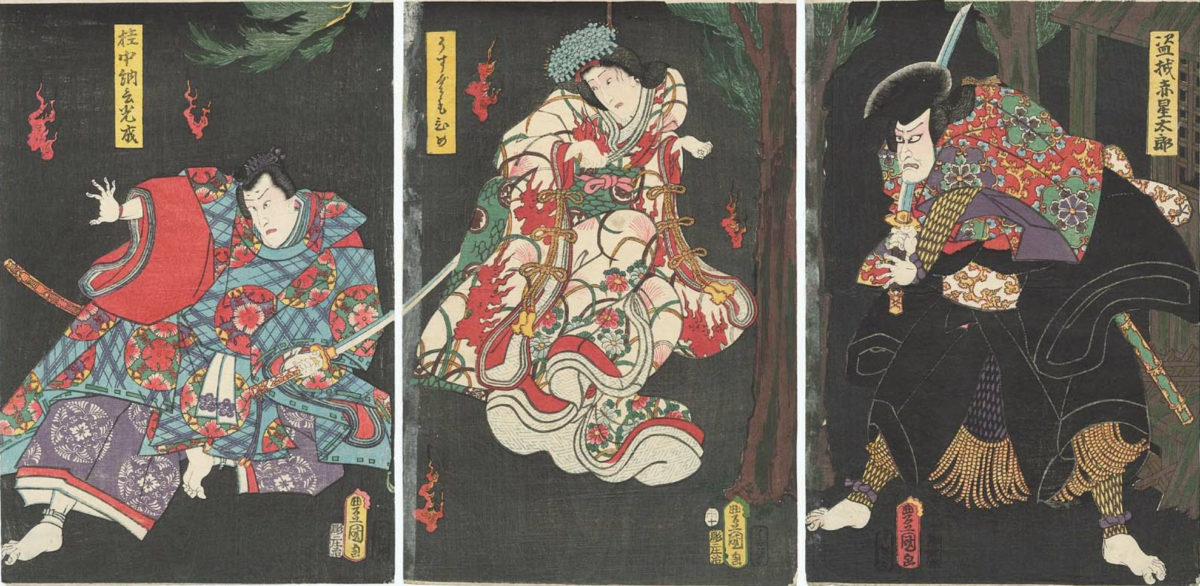
As an aside, I may add that I recently attended a conference about Japanese prints where one of the speakers cited a kabuki play titled ‘so-and-so ukiyoe’ which came as a shock to me as I was pretty sure that the word ‘pictures of the Floating World,’ ukiyoe 浮世繪, or 浮世絵 if you like, was not being used in the Edo period (much like, as I pointed out in the beginning of this series of articles, the words yakushae and bijinga). There is quite some ‘brocade prints’ nishikie 錦繪 and even ‘pictures from life’ utsushie 冩繪 in titles of kabuki plays, but no ukiyoe, I was pretty sure. Indeed, checking Kabuki nenpyō 5:456, for VIII/1810, there is the play Kaketatematsuru iro no ukiyo zuga 奉掛色浮世圖畫 by Tomimoto Buzen II 二代目富本豊前 1754-1822 (well-known from his portrayal in a print by Rekisentei Eiri 礫川亭栄里), that is Beginning to Show Respect for the Colours of Paintings of the Floating World – ‘ukiyo zuga,’ not ‘ukiyoe!’ This also reminds me of a common misreading of a Kuniyoshi series title of prints, mostly rendered as Ukiyo-e Comparisons of the Cloudy Chapters of Genji, Genji kumo ukiyo-e awase 源氏雲浮世画合, whereas Kuniyoshi intended Genji kumo ukiyo e-awase, ‘A Picture (or Pictorial) Comparison (e-awase 画合) of Genji in the Clouds (Genji kumo 源氏雲) [on the one hand] and the Floating World (ukiyo 浮世) [on the other],’ certainly no ‘comparisons with ukiyoe prints.’
